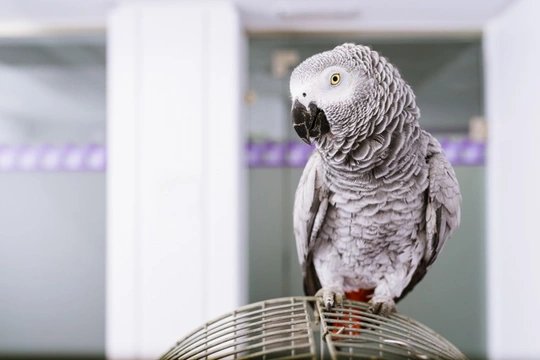
The body language of parrots: How to tell if your parrot is happy
Parrots make for versatile pets for people from all walks of life, and their long lifespans, wide range of sizes and the strong bonds that they form with their favourite people all make them the pet of choice for many. However, parrots are not what should be thought of as a low maintenance or easy pet, and birds as a species are very sensitive animals, both in terms of their health and wellness and also their temperaments and happiness.
An unhappy parrot is apt to be both physically unhealthy as well as distressed and anxious, and parrots are very emotional birds that will pine for a lost owner, get depressed if their living situation is sub-par, and generally, be sensitive to change and improper care and handling. But because birds are naturally very different to people, it can be hard to tell if your pet parrot is happy and contented, or if they are sad, annoyed or anxious.
However, once you get to know the body language and behavioural traits of birds and how they express their feelings and emotions, you will be able to “read” your parrot’s moods and determine both how they are feeling at any given time, and how well-adjusted and contented they are overall.
In this article, we will examine some of the common and measurable indications of a happy, contented parrot that you can use as a benchmark to identify your own bird’s feelings and emotions. Read on to learn more.
Singing and whistling
A bird that continually sings, whistles or chatters away even when you are not talking to them directly is generally a happy one, and as most experienced parrot owners will tell you, a happy bird is rarely silent other than when asleep!
Parrots really love the sound of their own voices, and if your parrot tends to be on the noisy side and their chatter and other sounds are a constant background noise in your home, the chances are that your parrot is a cheerful, well-adjusted one.
Other vocalisations
As well as singing, chattering and whistling, parrots also have a range of other sounds in their repertoire, including a gentle, soft growling noise, and clicking the tongue. A low-key parrot growl is in some ways similar to the purr of a cat or the wagging tail of the dog in that it is generally a sound of contentment, but do not confuse this with the louder, more threatening sounding growl that some species of parrots make when they are annoyed or unhappy, which is a clear warning signal.
Clicking of the tongue usually indicates that the parrot is interested in something, or is trying to get your attention for a tickle or to come out of the cage.
Shrieking is a sound that you will often hear from some birds, which can take some getting used to-this can be a sound made in excitement, but in some circumstances can be an indication of fear or anger too.
The feathers and stance
A parrot that is losing their feathers may just be going through a moult, but if your parrot looks a little moth-eaten and unkempt and this is unrelated to moulting, it can be an indication of stress and unhappiness. A parrot that plucks out their feathers other than as an occasional part of regular grooming is also displaying signs of stress and unhappiness.
Your parrot’s body language and the way they hold their feathers can tell you a lot about them too, and if your bird looks hunched up with puffed-up feathers (that remain that way and are not a part of grooming or exercising and stretching) they may be unwell or unhappy.
For the parrot types that have a crest, like the cockatoo, the stance of their crest can be very telling as well. They may lift their rest in interest or happiness, but if they raise their crest and this is accompanied by a tense stance or signs of unhappiness, it can be a warning and defensive measure.
Eyes and expressions
The eyes of the parrot may be small, but they are very expressive, and dilating or shrinking the iris of the eyes is known as “flashing” in bird terminology. However, exactly how any given bird moves their eyes will mean different things depending on the bird itself, and so in order to observe the eyes to determine your bird’s emotional state, you will first need to establish a baseline using a combination of the eye movement and your bird’s body language and vocalisations too.
Behaviour
Finally, your parrot’s behaviour in terms of their interactions with you and what they do on their own are very valuable tools to use to assess your bird’s mood and happiness. A bird that is playful and keeps themselves entertained and has plenty to do so with will likely be alert and engaged with what is going on around them and respond accordingly, while a bird that tends to just sit in their cage and not show an interest in very much may well be unhappy (or ill).
How your bird responds to you too is of course very telling, and happy birds that have bonded with their handler will often clamour for attention and entertainment-whereas a bird that is ambivalent or actively dislikes being handled or spoken to is unlikely to be happy with their living situation and handler.



